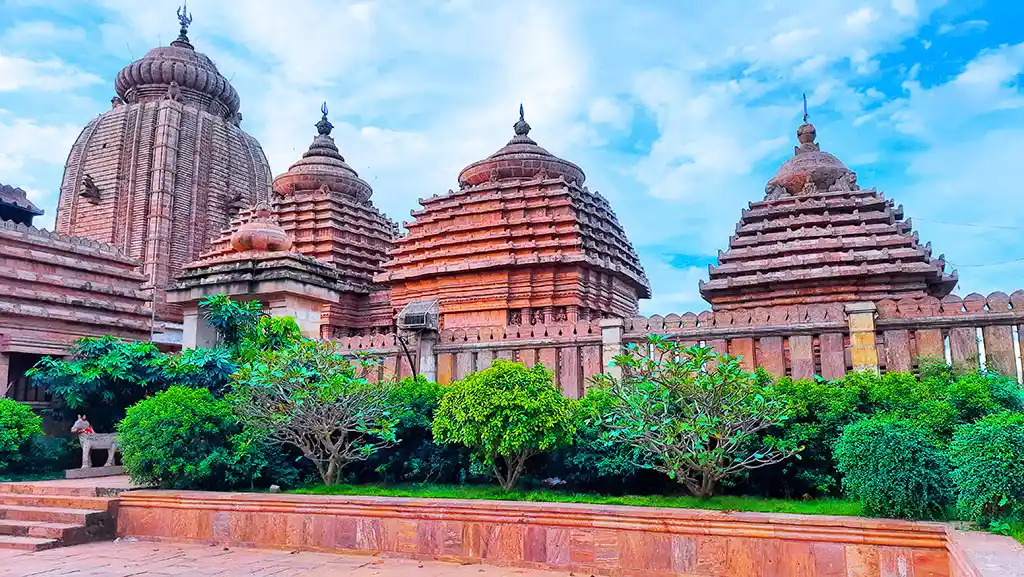
Address: Temple Road Dt, near Rushikulya River, Raipur, Purusottampur, Ganjam Odisha 761018.
Recommended Duration: 3 Hours
Opens: 6:30 AM - 8:30 PM
Maa Tara Tarini Temple is a popular Hindu pilgrimage destination, located in the state of Odisha in India. Situated atop a hill overlooking the Bay of Bengal, the temple is dedicated to the two goddesses Tara and Tarini, who are believed to be an incarnation of the Mother Goddess.
Plan your pilgrimage in advance. The Maa Tara Tarini Yatra 2025 is celebrated on all Tuesdays of the Hindu month of Chaitra(March–April):
Temple Location: Temple Road Dt, near Rushikulya River, Raipur, Purusottampur, Ganjam Odisha 761018.
Near: Raipur, Purusottampur, Ganjam, Odisha
Google Map: Click Here to check the distance of Maa Tara Tarini Temple from your location
| Days | Morning | Afternoon | Evening |
|---|---|---|---|
| Monday – Sunday | 6:30 AM – 12:30 PM | 2:00 PM – 5:30 PM | 6:30 PM – 8:30 PM |
| Ticket Type | Price (INR) |
|---|---|
| Temple Entry | ₹5.00 |
| Ropeway | ₹65.00 (round trip) |
| Bus Ticket | ₹30.00 (round trip) |
The temple architecture is unique with a conical spire, resembling that of a typical Odisha style temple. The temple complex comprises of two main shrines, one dedicated to Maa Tara, and the other to Maa Tarini. The deity of Maa Tara is a four-armed goddess, while Maa Tarini is depicted with two arms, holding a sword and a lotus.
You can reach the temple summit via:
The temple is believed to be a Shakti Peetha, where the breasts of Goddess Sati fell. According to legends:
These stories highlight the power of feminine energy and devotion.
The Tara Tarini Temple, located atop the Kumari Hills on the southern bank of the Rushikulya River in Ganjam district, Odisha, is one of the most ancient and sacred Shakti Peethas in India. The worship of Maa Tara and Maa Tarini is deeply rooted in the tribal traditions, later influenced by Buddhist Tantra, and eventually absorbed into the Hindu Shakta tradition.
The temple’s origin is closely linked with the Shakti Peetha legend, which states that the breasts of Goddess Sati fell at this site when Lord Shiva carried her charred body after she self-immolated during the Daksha Yagna. This divine event made Tara Tarini one of the 51 revered Shakti Peethas, symbolizing nurturing motherhood and divine feminine power.
Historically, this region was a significant center for Buddhism, especially during the time of Emperor Ashoka. The nearby Jaugada Rock Edict, just 4 km from the temple, suggests strong Buddhist presence in ancient Kalinga. The worship of Goddess Tara, a key deity in Mahayana Buddhism, indicates that the site may have served as a Buddhist Tantra Pitha before becoming a full-fledged Hindu shrine. The presence of a small Buddha idol in meditative posture inside the sanctum reinforces this belief.
Tara and Tarini were originally worshipped by tribal communities and revered by ancient seafarers of Kalinga. Maritime traders and sailors (Sadhavas) offered prayers to Maa Tara before embarking on sea voyages, as the Rushikulya River was once a navigable trade route. Archaeological remains near Mukundapur village, such as old brick foundations and river structures, further confirm the site’s ancient maritime significance.
According to local legends, Tara and Tarini once appeared in human form and lived among their devotees. One notable story tells of Vasu Praharaja, a learned Brahmin, who raised them as his daughters and later performed sacred rituals to establish their worship at the hilltop temple.
Combining tribal roots, Buddhist influence, and Puranic tradition, the Tara Tarini Temple is a powerful testament to the region’s spiritual and historical legacy. Today, it remains a vital center of Shakti worship and Tantric practices, drawing lakhs of devotees every year.
The Maa Tara Tarini temple is a unique blend of Kalinga and Dravidian styles of architecture. The structure consists of two separate temples dedicated to Goddess Tara and Goddess Tarini. The temple is known for its ornamental carvings, sculptures, and beautiful adornments. The temple’s main entrance is marked by a towering archway featuring intricate carvings and designs, and the interior is adorned with colorful murals depicting the story of Maa Tara Tarini. Overall, the temple’s architecture is a masterpiece that reflects the culture and traditions of the region.
| City | Distance (km) |
|---|---|
| Berhampur | 30 |
| Bhubaneswar | 120 |
| Visakhapatnam | 305 |
Several budget-friendly guest houses and dharmashalas are available near the temple. Advance booking is recommended during festive seasons.
It’s a powerful Shakti Peetha believed to fulfill devotees’ wishes, especially those seeking fertility, peace, and prosperity.
During Chaitra Yatra (March–April) for grand celebrations.
Yes, the temple is open daily from 6:30 AM to 8:30 PM.
Maa Tara Tarini Temple is a Hindu temple located atop a hill on the banks of the Rushikulya River in Ganjam district, Odisha. It is dedicated to the twin goddesses Tara and Tarini.
The temple is open daily from 6:30 AM to 12:30 PM, 2:00 PM to 5:30 PM, and 6:30 PM to 8:30 PM.
The temple entry fee is Rs. 5. Ropeway charges are Rs. 40 (up & down) or Rs. 28 (one way), and bus fare is Rs. 30.
Visitors can reach the hilltop by stairs, ropeway (cable car), or by bus. The ropeway offers panoramic views of the surrounding area.
Photography is not allowed inside the temple premises, but you can take pictures of the temple exterior.
Yes, guest houses and dharmashalas are available near the temple for devotees to stay at affordable rates.
Maa Tara Tarini Temple is one of the most sacred Shakti Peethas in India. It is believed to be a source of divine energy, fertility, and spiritual blessings.
POST A COMMENT